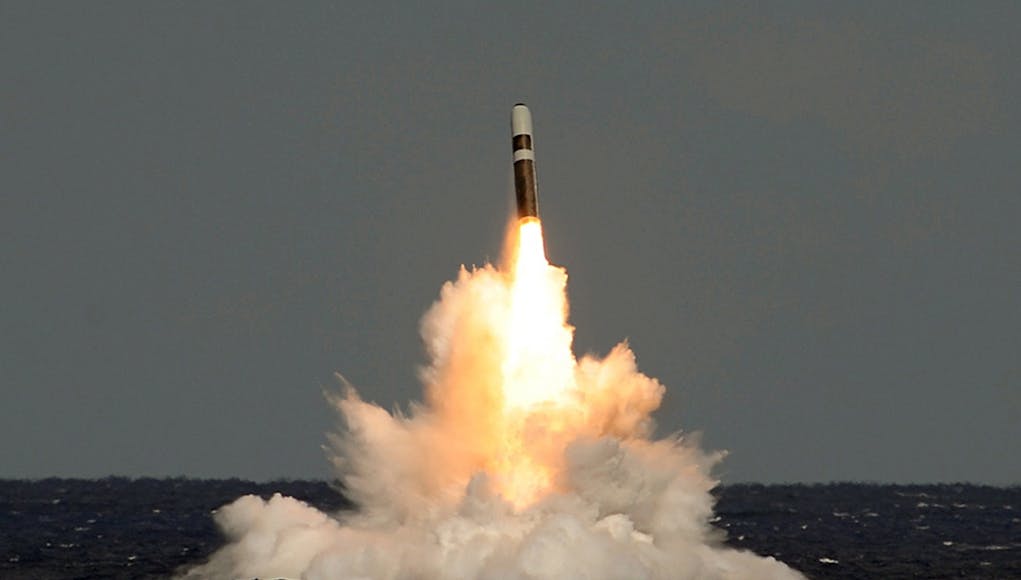Some news sources have been reporting that Britain has been ‘secretly’ developing a more destructive Trident warhead, it isn’t.
There is no Trident upgrade taking place in secret, there’s no reason for it to happen in secret or even at this time in the renewal process.
The UK currently fields the Mark 4A Arming, Fuzing and Firing system. This is a non-nuclear component being introduced into the UK’s Trident warheads to replace a similar component which is becoming obsolete. This is not a new warhead and does not change the destructive power of the weapon.
It is also understood that the Trident missile system will be given increased protection from cyber-security threats.
The Ministry of Defence is planning to spend nearly £2 billion on cyber security over the coming five years, including a scheme to improve the safety of Britain’s nuclear deterrent in partnership with the US Navy. The US military is reported to be poised to award a contract to British defence contractor BAE Systems to develop Trident’s cyber-security protection.
As stated in the 2015 Strategic Defence and Security Review, work continues to determine the optimum life of the UK’s existing nuclear warhead stockpile and the range of replacement options.
The government position on this is:
“The government is committed to maintaining minimum continuous at sea deterrence to deter the most extreme threats to the UK and to protect our vital interests; a decision on replacing the warhead will be taken when necessary.”
According to a response to a written question in the House of Lords.
“To ask Her Majesty’s Government what is their estimate of the total cost of Trident renewal over the lifespan of the Successor-class submarines, including in-service costs and decommissioning.”
“As stated in the 2015 Strategic Defence and Security Review, our latest cost estimate for manufacturing the four submarines of the Successor submarine programme is £31 billion, plus a contingency of £10 billion. This includes an assessment of the likely inflation over the lifetime of the programme and the risks appropriate for a project at this stage. Once the new fleet of ballistic missile submarines comes into service, we expect that the in-service costs of the UK’s nuclear deterrent, which include the costs of the Atomic Weapons Establishment, basing and disposals, will be similar to the current system, at around six per cent of the defence budget.
While we have no plans to replace the current Trident D5 missile, we are participating with our US partners in a programme to extend their lifespan to the 2060’s. The estimated cost is around £250 million.”
A replacement warhead is not required until at least the late 2030’s, possibly later. Given lead times, however, a decision on replacing the warhead may be required in this Parliament or early in the next.













Of course our weapons are more advanced and more powerful than whats published, thats why they are covered by the official secrets act.
Id be upset and peed off if they wernt!!